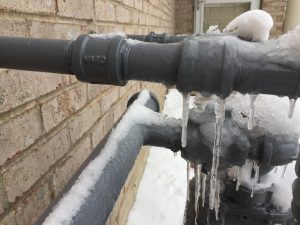Ways to Safeguard Your Plumbing from Freezing: Key Tips
Ways to Safeguard Your Plumbing from Freezing: Key Tips
Blog Article
Were you hunting for selective information about How to Prevent Your Pipes From Freezing?

Winter can ruin your plumbing, specifically by freezing pipes. Below's exactly how to prevent it from happening and what to do if it does.
Intro
As temperature levels decrease, the risk of frozen pipelines increases, potentially leading to costly fixings and water damages. Recognizing just how to stop icy pipes is important for house owners in cool climates.
Avoidance Tips
Insulating susceptible pipes
Wrap pipelines in insulation sleeves or utilize warm tape to safeguard them from freezing temperature levels. Concentrate on pipelines in unheated or outside areas of the home.
Home heating techniques
Maintain interior rooms sufficiently heated, particularly areas with pipes. Open closet doors to enable warm air to flow around pipelines under sinks.
Just how to identify icy pipelines
Seek lowered water circulation from faucets, unusual smells or sounds from pipelines, and noticeable frost on subjected pipelines.
Long-Term Solutions
Architectural changes
Think about rerouting pipes away from exterior wall surfaces or unheated areas. Include added insulation to attic rooms, basements, and crawl spaces.
Updating insulation
Buy top notch insulation for pipelines, attics, and walls. Correct insulation aids maintain regular temperature levels and decreases the threat of icy pipes.
Securing Outside Plumbing
Yard hose pipes and exterior taps
Disconnect and drain pipes garden hoses prior to winter months. Set up frost-proof faucets or cover outdoor taps with protected caps.
Recognizing Icy Pipelines
What creates pipelines to freeze?
Pipelines ice up when subjected to temperature levels listed below 32 ° F (0 ° C) for extended periods. As water inside the pipes freezes, it increases, putting pressure on the pipe wall surfaces and possibly creating them to break.
Dangers and problems
Icy pipelines can bring about water interruptions, property damage, and pricey fixings. Ruptured pipes can flooding homes and create extensive structural damages.
Indicators of Frozen Water Lines
Determining icy pipelines early can prevent them from bursting.
What to Do If Your Pipes Freeze
Immediate activities to take
If you presume frozen pipes, keep faucets available to ease stress as the ice melts. Use a hairdryer or towels soaked in warm water to thaw pipelines gradually.
Conclusion
Preventing icy pipes requires positive steps and fast responses. By comprehending the causes, indications, and safety nets, house owners can protect their plumbing throughout winter.
5 Ways to Prevent Frozen Pipes
Drain Outdoor Faucets and Disconnect Hoses
First, close the shut-off valve that controls the flow of water in the pipe to your outdoor faucet. Then, head outside to disconnect and drain your hose and open the outdoor faucet to allow the water to completely drain out of the line. Turn off the faucet when done. Finally, head back to the shut-off valve and drain the remaining water inside the pipe into a bucket or container. Additionally, if you have a home irrigation system, you should consider hiring an expert to clear the system of water each year.
Insulate Pipes
One of the best and most cost-effective methods for preventing frozen water pipes is to wrap your pipes with insulation. This is especially important for areas in your home that aren’t exposed to heat, such as an attic. We suggest using foam sleeves, which can typically be found at your local hardware store.
Keep Heat Running at 65
Your pipes are located inside your walls, and the temperature there is much colder than the rest of the house. To prevent your pipes from freezing, The Insurance Information Institute suggests that you keep your home heated to at least 65 degrees, even when traveling. You may want to invest in smart devices that can keep an eye on the temperature in your home while you’re away.
Leave Water Dripping
Moving water — even a small trickle — can prevent ice from forming inside your pipes. When freezing temps are imminent, start a drip of water from all faucets that serve exposed pipes. Leaving a few faucets running will also help relieve pressure inside the pipes and help prevent a rupture if the water inside freezes.
Open Cupboard Doors
Warm your kitchen and bathroom pipes by opening cupboards and vanities. You should also leave your interior doors ajar to help warm air circulate evenly throughout your home.

I was introduced to that write-up about Prevent Frozen Pipes through a pal on a different web blog. Those who enjoyed our blog entry please be sure to pass it around. Thanks for going through it.
Click Here To Read More Report this page